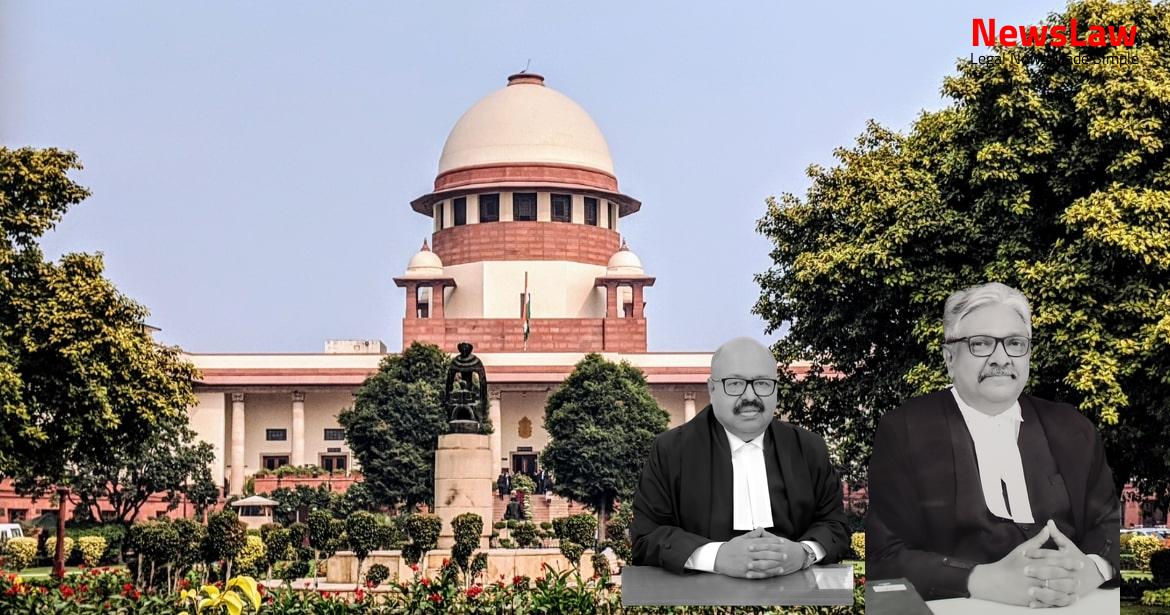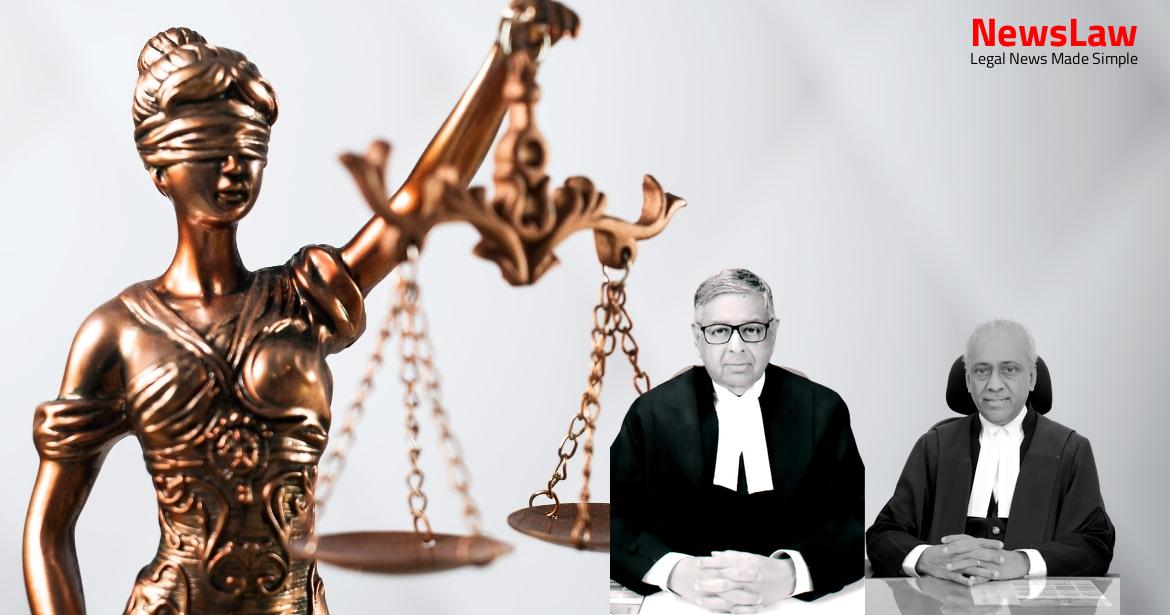The Appellant is engaged in the business of operating a cold storage facility (for brevity, “Facility” hereafter), the plant, machinery, and stock whereof were continually insured by the Respondent. Refrigeration Plant (Stock) Policy (for potatoes) (for brevity, “Refrigeration Policy” hereafter), iii.
Also Read: https://newslaw.in/supreme-court/high-court-dismisses-bail-application-in-corruption-case/
In the immediate aftermath of the incident of leakage of gas, on 4 October 1997 to be precise, the Appellant informed the Respondent and the District Horticulture Officer of the same, whilst requesting an inspection of the Facility. Banerjee was sent by the Surveyor to visit the Facility from 23 October 1997 to 25 October 1997.
On 27 October 1997, the Surveyor addressed a letter to the Appellant asking it to preserve the existing state of affairs in the Facility as the Chambers were inaccessible due to high temperature and the stench of ammonia. The Appellant then instituted the Complaint before the NCDRC on 17 April 1999 claiming an amount of Rs.1,03,15,680/- and certain further amounts, upon the repudiation of its claim under the Refrigeration Policy. Award adequate compensation to the Complainant towards the financial losses suffered by the complainant due to the reason the Respondent did not settle the claim and withhold the claim amount, which resulted closure of instant cold storage for full one season, especially in view of the fact that the complainant had to bear the penal interest on the loan taken from State Financial Corporation/bank; 4. Subsequently, the Appellant filed an application before the NCDRC to allow the inspection of the pipes, which had been removed from the Facility by the Surveyor, by two technical experts.
Gupta submitted a report dated 6 November 2009 where he concluded inter alia that the pipes could not have been termed as worn out as the material flowing through them was alkaline, and not corrosive like acid. The NCDRC also went on to reproduce certain findings from the Surveyor’s Report, indicating that the leakage of ammonia was attributable to the hairline opening along with welding joints in the pipe and that the same was due to wear and tear. The NCDRC went on to observe that the hairline cracks in the pipes, in all probability, had occurred due to wear and tear and gradual deterioration rather than a sudden burst. Vijay Hansaria, learned senior counsel appearing on behalf of the Appellant and Mr. Hansaria urged that the NCDRC had erred in holding that the hairline cracks along the welding joints of the pipes were attributable to wear and tear. Our attention was invited to the impugned judgment to show how selectively the NCDRC had relied on observations in the reports of Mr. In fact, a writ petition filed by the Appellant challenging recovery proceedings initiated by the potato growers is pending before the Allahabad High Court and that the Appellant still runs the risk of being burdened by orders of court to compensate the potato growers whose produce had been stored in the Facility. Malhotra pointed out that the Appellant had appointed the Experts after more than a decade of the incident, and that even their reports did not identify any specific cause of the hairline cracks. United India Insurance Company Limited vs Kantika Colour Lab and Others, where this Court held that simply the happening of a covered event did not entitle the insured to claim reimbursement of the amount stated in the policy, and that only upon proof of actual loss could the insured claim reimbursement to the extent the same were established. Sikka Papers Limited vs National Insurance Company Limited and Others, where this Court observed that a surveyor’s report was not the final word, and that there must be legitimate reasons for departing from such a report. Hareshwar Enterprises (P) Ltd and Others where this Court, relying on Pradeep Kumar (supra), observed that while the assessment of loss by an approved surveyor was a prerequisite for settlement of the claim, it was not the last and final word.
where this Court, while discussing the scope of the expression deficiency, stated that the appellant should be able to establish either that the surveyor did not comply with the code of conduct in respect of its duties, responsibilities, and other professional requirements or that the insurer acted arbitrarily in rejecting the whole or a part of the surveyor’s report. While deciding this issue, we would necessarily be required to assess the relative weightage to be placed on the report of the Surveyor appointed by the Respondent as well as the reports of the Loss Assessor and the Experts appointed by the Appellants regarding the possible cause for leakage of ammonia gas. It would have been fair, just, and expedient if direct and not opinion evidence was placed before the NCDRC by the parties or if the NCDRC itself had called upon an expert to give his opinion on the make of the pipes in view of the NCDRC not accepting the Appellant’s claim that it was of make Tata Steel C Grade Heavy Duty.
Also Read: https://newslaw.in/supreme-court/illegality-of-arrest-under-pmla/
The leakage in both the Chambers were in the liquid ammonia pipeline laid out in the top most tier and a thin (hair breadth) opening found along the seam (welding joint) through which the Gas had leaked. I & II was attributable to the wear and tear of the Pipeline – expressly excluded from the scope of insurance as per the Policy Conditions. It is trite to note that while the Surveyor’s Report does advert to certain construction specifications of the Facility but the said report makes little mention of the nature of the compound (acidic or alkaline) passing through the pipes, its effect on the pipes, and does not dwell at all on the potential causes of such a wear and tear despite only a few years having lapsed post installation. Significantly, the Appellant after initial purchase of the policy went on seeking renewal of the same year after year and the Respondent too, on its part, permitted such renewal at regular intervals prior to expiry accepting substantial sums as premia, lending credence to the argument on behalf of the Appellant that all such renewals were preceded by a satisfaction reached by the Respondent that providing insurance cover for the Facility would not expose it to any risk.
No doubt, the said reports were not obtained in close proximity to the date of the incident of gas leak but at this juncture, we may remind ourselves that it was the NCDRC which, vide its order dated 11 May, 2009, had allowed an application of the Appellant seeking permission to inspect the pipes, which were cut and kept in the custody of the Surveyor, for obtaining experts’ reports thereon.
We are aghast to find that the members, who heard the Complaint, have made observations as if they were experts sitting in appeal on the reports of the Loss Assessor and the Experts. The NCDRC rightly observed that the reports “ cannot be treated as totally independent as it was the complainant who made a choice of his experts ”; nevertheless, there are certain general observations in such reports to be noticed hereafter which do help us in our search for the truth. It then stated that as per the said specifications, the life of such pipes would be beyond 25 years, and to say that their failure was due to wear and tear within 10 years of installation does not hold good. Prasad, in his report, while considering the thickness and class of pipes and the nature of ammonia, noted that there was no possibility of wear and tear. Gupta observed that wear and tear would take place only when there was movement and friction between two objects. While the reports were such, on the one hand the NCDRC refused to give credence to the reports of the Loss Assessor and the Experts appointed by the Appellant on the ground that such reports, obtained belatedly, did not also contain any definite opinion as to what was the real cause of the cracks; yet, on the other hand, the NCDRC picked up stray observations contained in the reports to reject the claim of the Appellant. The Surveyor identified the cause for the leak as wear and tear, without delving deep into the matter as to whether the pipes that were used were likely to develop such wear and tear within 7 and 5 years of their installation in the two Chambers. The reports of the Loss Assessor and the Experts dwelled on general aspects of scientific observations relating to the absence of friction or movement when ammonia passes through the pipes and its alkalinity (non-acidic nature) not being corrosive to the pipes as well as the manufacturing details, and specifications of the pipes, which are conspicuous by their absence in the Surveyor’s report. If at all the NCDRC had reason not to rely on the reports of the Loss Assessor and the Experts with regard to the make, quality, thickness, and other features of the C Class Pipes, instead of relying on its opinion based on a visual impression of the pipes, it ought to have ordered an examination of the same by an independent expert in exercise of power conferred on it by Section 22(1) read with Section 13(4)(iv) of the CPA.
Also Read: https://newslaw.in/supreme-court/dismissal-of-bail-application-in-money-laundering-case/
In any event, the fact that the Appellant has not paid compensation to the potato growers as yet is hardly a factor for determining whether the Respondent was justified in repudiating the insurance claim on the basis of the Surveyor’s Report for damage caused to the stock of potatoes, which was duly insured, because of the accident. Repudiation of the insurance claim by the Respondent, on facts and in the circumstances, is held to amount to deficiency in service on its part. BOPANNA]………………………, J.
Case Title: S.S.COLD STORAGE INDIA P.LTD. Vs. NATIONAL INS.CO.LTD. (2023 INSC 689)
Case Number: C.A. No.-002042-002042 / 2012



